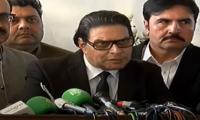One of the most remarkable meetings I had in India in 1984 was with comrade Somnath Chatterjee of the CPI-M, who had been an MP since 1971. He was quite interested in Pakistani politics and Gen Ziaul Haq’s agenda of religious fundamentalism.
I asked him why he was so curious about the religiosity of Gen Zia in Pakistan and his response was prophetic. Chatterjee explained that he was more worried about India and added that such fundamentalism in Pakistan would allow Hindu fundamentalists in India to capitalize on it. Today’s India shows that he was absolutely right.
I left India on October 30, 1984 and the very next day Indira Gandhi received nearly 30 bullets fired by her two Sikh bodyguards, losing her life at the age of 67. Her murder triggered a strong and tragic reaction from Hindus against Sikhs in India. The first week of November was one of the darkest weeks in modern Indian history. It resulted in ruthless killings across the country, particularly in New Delhi. Mobs walked the streets of New Delhi and burned down Sikh businesses, gurdwaras (Sikh places of worships) and homes, murdering men and raping women.
Even law-enforcement agencies and government officials participated in the massacre by engaging in violence. The police incited civilians to seek vengeance and even provided weapons to angry mobs. This was nothing short of a pogrom that continued with high intensity for the first three days and then subsided in the next three, only after claiming at least 3,000 lives by official figures, while Sikh sources claim that at least 10,000 were killed and hundreds of women raped.
After Indira Gandhi’s assassination, her son Rajiv Gandhi, who was an MP, assumed charge and led the Congress to victory in the next general elections held in December 1984. The sympathy for Indira, who was now a martyr, gave a landslide win to her son with over 400 seats out of the 514 in the Lok Sabha.
In the meantime, in South India, a new political force emerged in Andhra Pradesh. The Telugu Desam Party led by NT Rama Rao won the second largest number of seats with 30 MPs in the Lok Sabha. It was the first regional party to become a national opposition party in New Delhi. This was the only time in the history of India that a party won more than 400 seats in Lok Sabha. After 1984, no single party could win a majority of seats to form its government until 2014.
The new Congress government that Rajiv Gandhi led from 1984 in New Delhi had to deal with multiple financial scandals and frequent cabinet changes. Rajiv’s decision to appoint VP Singh as finance minister had serious repercussions in a couple of years. One of the major challenges Rajiv faced was the Bhopal gas tragedy in December 1984. It was a chemical accident at the United Carbide pesticide plant, which exposed over half a million people to toxic gas emissions. Death estimates vary from 3,000 to 8,000 while there were hundreds of thousands of injured people.
Rajiv’s first major legislation was the introduction of the anti-defection law in January 1985. This had been a major issue in both India and Pakistan for decades. After the passing of this law in India, an elected member of any assembly could not join an opposition party until the next election. Apparently, this measure was supposed to prevent lawmakers from switching loyalties. Since such defections had affected Congress a lot in the past, Rajiv wanted to put an end to it.
For Indian Muslims, the 1985 Shah Bano case was quite important. In this case, the Indian Supreme Court ruled in favour of an elderly Muslim divorced woman, Shah Bano. Many Indian Muslims treated it as interference with Muslim personal law and protested against it. In 1986, to pacify Muslim leaders, Rajiv facilitated the approval of The Muslim Women (Protection of Rights on Divorce) Act that nullified the Supreme Court judgment. This was a retrogressive step which deprived Muslim women of their maintenance rights after 90 days of divorce.
A young 35-year-old Muslim Congress MP, Arif Mohammed Khan, resigned in protest against this legislation which was an attempt to appease Muslim patriarchs. On other fronts, Rajiv tried to liberalize the economy by introducing some reforms but faced stiff opposition. In the 1987 state elections in Kerala, the CPI-M once again formed its government by defeating the Congress. The CPI-M also retained its government in West Bengal with Jyoti Basu. In 1987, a new national political force emerged when VP Singh left the Congress and formed the Jan Morcha (People’s Front).
Rajiv Gandhi dismissed VP Singh from defence ministry within three months in office. Now he had support from other dissatisfied Congress leaders including Arun Nehru and Arif Mohammed Khan. VP Singh started exposing corruption in the Rajiv government and became increasingly visible as a major opposition leader.
Other parties such as the Janata Party, Lok Dal, and Congress (S) joined hands and formed the Janata Dal to fight general elections. By 1988, it was clear that the Rajiv Gandhi government was in trouble as he was making frequent changes in his cabinet.
In his five years as prime minister, he changed five foreign ministers and four ministers each in the defence, health, home, information, law, tourism, and water ministries. In 1988, Gen Zia died in Pakistan, and Benazir Bhutto got elected as the first woman Muslim head of government in the world.
In December 1988, Rajiv became the first prime minister of India in 28 years to visit Pakistan. It was the fourth summit of the South Asian Association for Regional Cooperation (Saarc). For the democrats and peace-loving people of South Asia, it ushered in a new hope for a peaceful era in this region.
In the 1989 elections, the Congress emerged as the largest party with 197 seats but could not win a majority to form government.
The Janata Dal and the Bharatiya Janata Party (BJP) stood second and third with 143 and 88 seats respectively. The BJP which had won only two seats in the 1984 elections scored a major improvement, showing that Hindu fundamentalism was on the rise, possibly as a reaction to Gen Zia’s fundamentalist policies in Pakistan for over a decade.
The CPI-M and CPI came fourth and fifth with 33 and 12 MPs. VP Singh managed to get support from the BJP and the Left Front and became the prime minister of India with almost the same coalition partners as there were in 1977 under the Janata Party.
VP Singh assumed the PM office in December 1989 and that was the end of the 1980s with another non-Congress coalition in power. Here I would like to end this first series on India’s political landscape.
From 1990 onwards, India became a different country.
Concluded
The writer holds a PhD from the University of Birmingham, UK. He tweets @NaazirMahmood and can be reached at:
mnazir1964@yahoo.co.uk
Proliferation of these platforms denotes an important reality for readers in underserved regions
Government decided to crack down decisively with result protest was over by early morning on Nov 27
This is critical time for Pakistan to reconsider its growth trajectory and align with international trends
Khawarij are notorious for extremist proclamations branding anyone who disagreed with their views as heretics
Most SOEs such as PIA, may have a negative net worth too, based on their earnings potential
Fortunately, after a decade’s struggle with smog, Pakistani Punjab has understood the urgency of climate action







